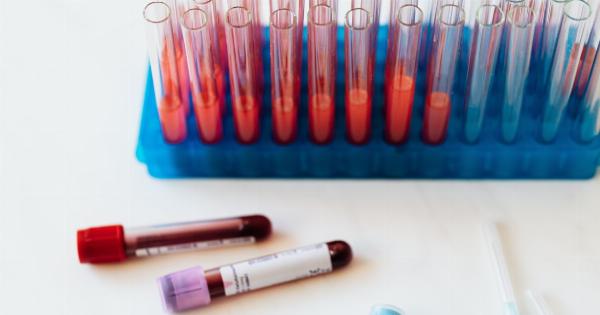Prostate cancer is one of the most common types of cancer among men, with over 190,000 new cases diagnosed in the United States every year. Early detection is crucial for successful treatment and improved survival rates.
However, traditional methods of prostate cancer detection can be costly and invasive, deterring many individuals from seeking regular screenings. Fortunately, a breakthrough in medical technology has led to the development of an inexpensive prostate cancer detection test that is now available to the public.
The Importance of Prostate Cancer Screening
Prostate cancer is the second leading cause of cancer-related deaths among men.
Regular screening and early detection enable healthcare professionals to identify the disease in its early stages, significantly improving the chances of successful treatment. Until recently, prostate-specific antigens (PSA) and digital rectal exams (DRE) were the primary methods used for prostate cancer detection.
The Limitations of Traditional Prostate Cancer Detection
Although PSA tests and DREs have been beneficial in detecting prostate cancer, they both have significant limitations. PSA tests can produce false-positive results, leading to unnecessary follow-up tests and anxiety for patients.
Moreover, PSA levels can also be elevated due to non-cancerous conditions such as prostatitis or benign prostatic hyperplasia.
DREs, on the other hand, are not as effective in detecting early-stage prostate cancer. This method relies on physicians physically examining the prostate through the rectum, making it uncomfortable and invasive for patients.
Consequently, these limitations have resulted in many men avoiding regular screenings altogether.
The Breakthrough: Inexpensive and Non-Invasive Prostate Cancer Detection Test
A team of scientists and researchers recently developed a groundbreaking alternative method for detecting prostate cancer.
This new test utilizes advanced biomarker technology and artificial intelligence algorithms to detect specific proteins associated with prostate cancer in a patient’s blood sample.
The test, which costs significantly less than traditional methods, provides accurate results with a low margin of error.
This breakthrough technology has the potential to revolutionize prostate cancer detection by offering a convenient, affordable, and non-invasive screening option for men.
How the New Prostate Cancer Detection Test Works
The innovative test works by analyzing a small blood sample to detect the presence of specific proteins that are associated with prostate cancer. These proteins, known as biomarkers, are released into the bloodstream when cancerous cells are present.
The test then uses artificial intelligence algorithms to analyze the biomarker profile and determines the likelihood of prostate cancer.
This new method not only detects prostate cancer at its early stages but also distinguishes between aggressive and non-aggressive forms of the disease.
This distinction allows healthcare professionals to develop personalized treatment plans that are tailored to the specific needs of each patient.
Benefits of the Inexpensive Prostate Cancer Detection Test
The introduction of this affordable and non-invasive prostate cancer detection test brings several key benefits:.
1. Improved Accessibility
By offering an affordable and convenient alternative to traditional testing methods, this new test increases accessibility to prostate cancer screenings.
It eliminates cost as a deterrent, allowing more men to undergo regular screenings and ensuring earlier detection.
2. Non-Invasive
Unlike previous methods that required uncomfortable physical examinations or invasive procedures, this new test only requires a simple blood sample. It is a much more comfortable and convenient option for patients.
3. Greater Accuracy
The advanced biomarker technology and artificial intelligence algorithms used in this test significantly improve the accuracy of prostate cancer detection.
This reduces the likelihood of false-positive results and unnecessary follow-up tests, minimizing patient anxiety and healthcare costs.
4. Personalized Treatment Plans
By distinguishing between aggressive and non-aggressive forms of prostate cancer, this test allows healthcare professionals to develop personalized treatment plans for each patient.
This ensures that patients receive the most suitable and effective treatments, leading to better outcomes.
Public Response and Future Implications
The introduction of this inexpensive prostate cancer detection test has generated significant excitement within the medical community.
The improved accessibility and accuracy of the test have encouraged more men to undergo screenings, leading to earlier detection and increased chances of successful treatment.
The widespread availability and affordability of the test could potentially revolutionize prostate cancer detection and decrease mortality rates associated with the disease.
Additionally, the artificial intelligence algorithms used in the test may pave the way for further advancements in the field of cancer detection, leading to breakthroughs in the diagnosis and treatment of other types of cancer.
Conclusion
The availability of an inexpensive and non-invasive prostate cancer detection test is a significant milestone in the fight against this prevalent disease.
This breakthrough technology offers a more accessible and accurate screening option for men, allowing for early detection and personalized treatment plans. By removing barriers such as cost and invasiveness, this test has the potential to save countless lives through timely intervention and improved patient outcomes.





























